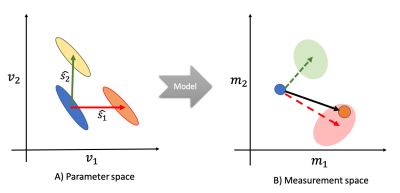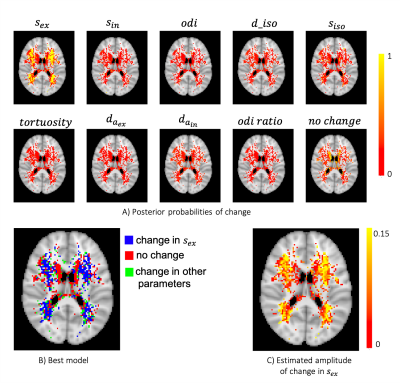Hossein Rafipoor1, Saad Jbabdi1, Ludovica Griffanti1,2, and Michiel Cottaar1
1Wellcome Centre for Integrative Neuroimaging (WIN), Nuffield Department of Clinical Neurosciences (NDCN), University of Oxford, Oxford, United Kingdom, 2Wellcome Centre for Integrative Neuroimaging (WIN), Department of Psychiatry, University of Oxford, Oxford, United Kingdom
1Wellcome Centre for Integrative Neuroimaging (WIN), Nuffield Department of Clinical Neurosciences (NDCN), University of Oxford, Oxford, United Kingdom, 2Wellcome Centre for Integrative Neuroimaging (WIN), Department of Psychiatry, University of Oxford, Oxford, United Kingdom
We have developed a general Bayesian framework for inference on parameter changes from changes in the data. This allows us to employ more complex models to study changes. We applied this framework to study microstructural changes in white matter hyperintensities compared to a normal tissue.

Figure 1. Illustration of the inversion-free inference. Although the model is not invertible (each oval in parameter space (left) corresponds to a single point in measurement space (right)) we can still infer the true underlying parameter change by comparing actual change in measurements (black arrow) to the expected change as a result of particular changes in parameters (red and green arrows).

Figure 5. A) Posterior probability maps P(s|y, Δy) of change in the parameters of NODDI for the WMH dataset. The maps show that change in sex can explain the differences between WMH and normal tissue in deep white matter. On the other hand, the null model explains the data in periventricular WMHs. The rest of the parameters did not explain differences between NAWM and WMH. B) Parcellation of the WMHs based on the best model that can explain the change. C) Estimated amount of change in sex, which shows the amount of change is higher in deep white matter.
